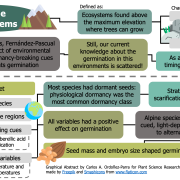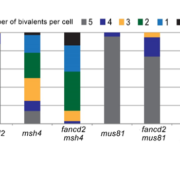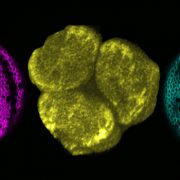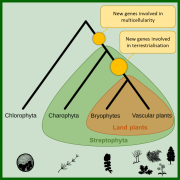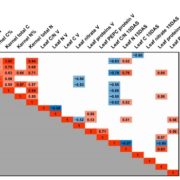Less is more: Gene loss in flower pollination evolution ($)
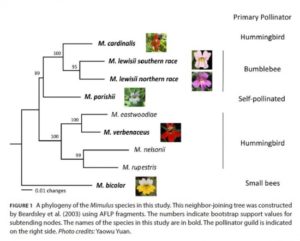 The evolution of flowers solved one of the largest obstacles of plant reproduction, finding a compatible mate. Since plants are sedentary, they are unable to search for a compatible mate like other organisms. Instead they use pollinators to do the searching for them. Flowers use scent and color to attract pollinators, and many offer rewards of nectar and pollen for the work they do. Peng and others investigated the floral biology of several monkeyflower species. They found that although monkeyflowers all evolved from a common ancestor that was insect-pollinated, many species have evolved other pollination strategies like small-bee, bumblebee, hummingbird, and self pollination. They found that the gene that controls the scent used to attract bumblebees in Lewis monkeyflower, the OCIMENE SYNTHASE (OS) gene, has had several independent loss-of-function mutations. These mutations led to changes in scent type and quantity, affecting which pollinators are attracted. Mutations of the OS gene may have been involved in the process of reproductive isolation by attracting different pollinators. Although other genetic mutations, like the development of red pigments to attract hummingbirds, are also involved in pollination strategies, this research shows how vital genetic mutations are for pollinator attraction and species evolution. (Summary by Jason Stettler) Am. J. Bot. 10.3732/ajb.1700104
The evolution of flowers solved one of the largest obstacles of plant reproduction, finding a compatible mate. Since plants are sedentary, they are unable to search for a compatible mate like other organisms. Instead they use pollinators to do the searching for them. Flowers use scent and color to attract pollinators, and many offer rewards of nectar and pollen for the work they do. Peng and others investigated the floral biology of several monkeyflower species. They found that although monkeyflowers all evolved from a common ancestor that was insect-pollinated, many species have evolved other pollination strategies like small-bee, bumblebee, hummingbird, and self pollination. They found that the gene that controls the scent used to attract bumblebees in Lewis monkeyflower, the OCIMENE SYNTHASE (OS) gene, has had several independent loss-of-function mutations. These mutations led to changes in scent type and quantity, affecting which pollinators are attracted. Mutations of the OS gene may have been involved in the process of reproductive isolation by attracting different pollinators. Although other genetic mutations, like the development of red pigments to attract hummingbirds, are also involved in pollination strategies, this research shows how vital genetic mutations are for pollinator attraction and species evolution. (Summary by Jason Stettler) Am. J. Bot. 10.3732/ajb.1700104


